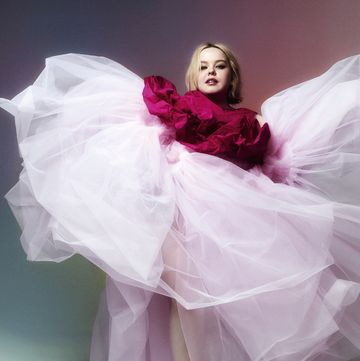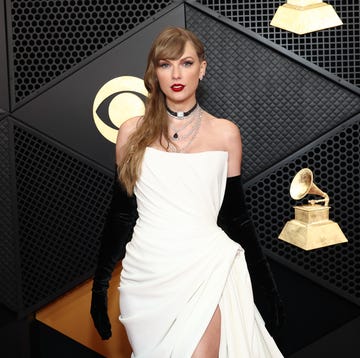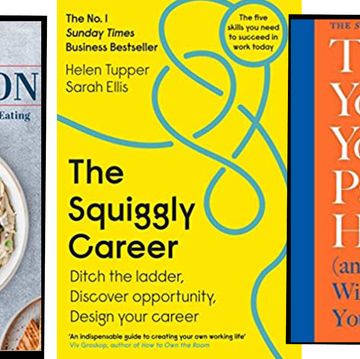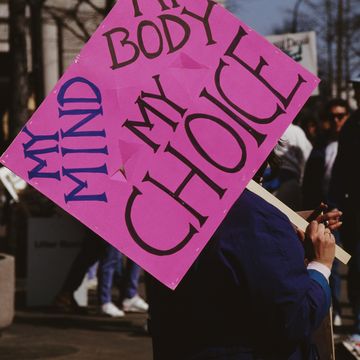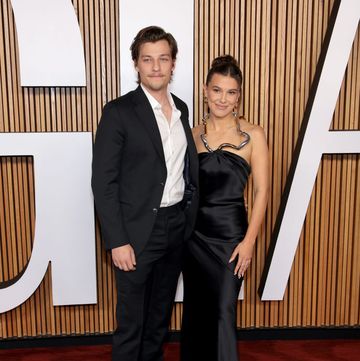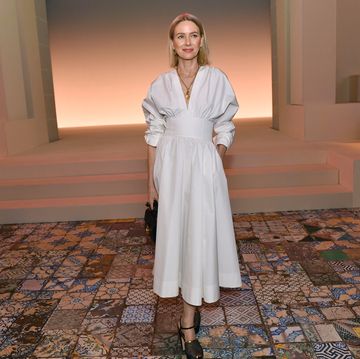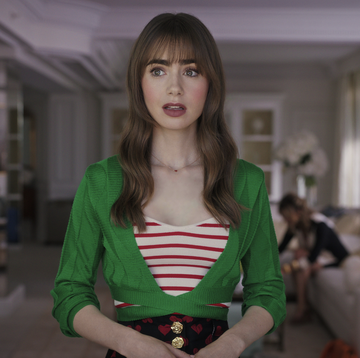We all have a gateway purchase – the one buy that opens the door to more reckless spending. Lauren Sherman explores how splashing out four figures on a designer piece changed the way she shopped forever.
Ten years ago, I was living in London – and off Tesco’s 99p range – trying to save enough cash to move to New York. I had landed in the UK a week after graduating from Emerson College in Boston and embarked on a placement at a lifestyle-concierge company that had fortuitously transformed into a paying job. But a year-and-a-half in, I was aching to get back to the States to start what I assumed would be my ‘real’ life.
For those last few months, I put away as much as I could on my editorial-assistant wages, sending traveller’s cheques to my uncle back home so he could save me from my spendthrift self. It worked. Fast-forward a half-decade, and I was living the New York life I had longed for. I had a fantastic partner who would soon become my husband, a charming garden-level flat in Brooklyn with reasonable rent, and a job editing a website that was read by enough fashion insiders to feed my large, hopefully not outsized, ego. So, of course, I needed to buy a Chanel bag.
It happened on a Sunday after one of those requisite New York brunches that I’m too jaded to bother with these days. Two bloody Marys and a tortilla in, I was ready to walk a few blocks to Chanel’s downtown boutique. I chose a classic flap bag in black leather with gold hardware. I can’t remember the exact price, but I know it came in at just under £2,000. Or, as my husband put it, ‘10% of a down payment on a house’.
I wore the bag faithfully for the next few years, making it a symbol of my dream life come true. It’s still in rotation, and still the most expensive bag I’ve ever owned. But I’m certain it won’t be the last. Here’s why. Buying that quilted sack of lambskin unlocked something in my brain. It was my gateway purchase – the one that made it OK to spend four figures on a fashion item. One year, it meant a pair of Saint Laurent Chelsea boots (just under £650); another, an Yves Salomon anorak (£975). Last autumn, I found myself at The Row’s flagship store on Melrose Place in Los Angeles, buying into Ashley and Mary-Kate Olsen’s impeccable taste with a boiled-wool skirt and cashmere sweater. (I’d prefer to hold the price on that one – no one needs to know exact details.) It’s not as though I do it often, but I’ve done it. And it’s how I found myself standing in the dressing room of my nearest Céline boutique, trying on a £2,275 crombie coat. It didn’t win me over this time, but who knows what next week will bring.
The luxury industry – which brought in £164 billion globally in 2014, according to Bain & Company – has worked hard to get me thinking this way. A decade or two ago, purchasing a fragrance, keychain or logo tee might’ve been enough to satisfy someone like me, eager to buy into their favourite brand. While those items still exist, they seem to hold less value these days. Instead, you’re likely to start with a pair of £500 trainers or a hefty piece of jewellery, which are more expensive and show more savvy. You’ll have to be willing to invest more for a handbag: Chanel, Louis Vuitton and Hermès raise prices on a regular basis.
I should say right now that I’m not loaded, or in debt. I manage to make these ridiculous purchases as I don’t do it often, and I don’t spend money on much else. But I’m the kind of person who doesn’t wait for the end-of-season sale. I’m aware this way of thinking is a little mad.
It is not insane, however, to experience a turning point in your purchase patterns – a moment when it’s not so hard to swallow the crazy price tag, whether it’s £300 or £3,000. For Virginia Norris, director and co-founder of London communications firm Aisle 8, her gateway purchase was a › Miu Miu coat. ‘It was completely out of my budget and I returned it twice,’ she recalls. ‘But then, when the world didn’t end and no one stepped in and told me off for spending so much money, I started to buy more and more.’ That was 10 years ago. For Norris’ business partner, Lauren Stevenson, the culprit was a corseted Dolce & Gabbana cocktail number. ‘I was given Dolce & Gabbana’s 10th-anniversary book for Christmas,’ she explains. ‘Within days, I had bought my first dress. Game over.’
For Mandi Lennard, founder of PR company Mandi’s Basement, her first was a Louis Vuitton monogram coat – an antidote to a dreary holiday cooped up with allergies. ‘I went straight to Louis Vuitton when I got back,’ she says. ‘The first place I wore it was a gallery opening, and I felt like Dapper Dan ruling Harlem in the Eighties. It cost a fortune, and even 20 years later I covet it.’
The gateway item doesn’t have to be a fashion piece. For software developer Alenka Abraham, it was a ‘massive computer with a dual processor’ that cost more than £2,000. ‘My dad thought I was crazy,’ she says. Now, Abraham, who owns a business with her partner, has fun buying more whimsical items, such as a Maje winter coat. ‘I’ve always had a shopping addiction,’ she explains. ‘Now I have a baby, I’m an online shopaholic.’
‘Shopaholic’. It’s a playful term that can take on a more serious meaning. You could liken gateway purchases to gateway drugs: something that starts out innocently but becomes unhealthy as the action escalates. ‘What is poisonous is someone who has an addiction to the thrill of the transaction,’ says Paco Underhill, author of What Women Want: The Science of Female Shopping. ‘If you’re buying stuff that’s just sitting in bags, that’s a shopping sickness.’
Living in New York City, one often hears stories of women residing in shoebox studios, squandering their salaries on ready-to-wear: a junior department store-buyer $25,000 in debt; the magazine editor who subsists on free champagne and canapés in order to afford the wardrobe she thinks she needs. I, for one, no longer flinch when a common handbag boasts an uncommon price of £2,000. But this mild addiction to luxury – if you want to call it that – exists far beyond our rarefied world. A couple of years back, my university friend Victoria Locke, who works at a real-estate firm in Connecticut, found herself in just the circumstances that Underhill talks about. ‘I would buy so much at once, I wouldn’t try anything on in the store,’ she tells me. ‘Once I snuck all the bags home, I would try the clothes on and anything that didn’t fit right just went to the back of the closet.’
Victoria had to make a change, so she quit shopping for a year. And last month she and her husband bought their first home, which was made possible partly by dialling back on spending.
I’m happy to say I do not bury bags at the back of the closet. I’m the type who hangs her new purchases on the bedroom door so that she can fall asleep looking at them. Why? Because wearing, and owning, nice clothes makes me feel good. Not only euphoric, but also like I have my life together. If I was discerning enough to choose this piece, I must be discerning about other things in my life, right? A great outfit warrants respect and admiration, which are both things that I, and most others, want.
But I’d be delusional not to admit that there have been times in my life when my penchant for shopping has spiralled out of my control. The notion of ‘reining it in’ is one that I, and fellow collectors of labelled things, frequently discuss. I have bought things that I didn’t actually want, including a pair of unflattering leather leggings that I wore, badly, for as many winters as I could, and an impossible-to-walk-in architectural heel.
Instant access to these things via the internet makes it easier to make hasty purchases, and can result in a closet full of regrets. (‘The driving force of consumption in the modern age is convenience,’ Underhill posits.) Indeed, e-commerce sites have made it safe, simple and satisfying to buy in one click. ‘A lot of research has been done on improving usability and website persuasiveness,’ says Guido Jansen, a cognitive psychologist who studies online consumer behaviour. ‘This results in consumers being more and more comfortable with buying bigger and bigger products. Nowadays, people even buy new cars online.’
On the less thrilling side of things, it can also feel a bit shameful – especially for someone like me, a child of a single mother who struggled to pay the rent. Who am I to squander my cash, hard-earned or not, on bad fashion choices? As the prices for ready-to-wear climb, how far am I willing to go?
And yet, when it comes to the items on which I’ve spent the most, I couldn’t be happier. Maybe it’s because they were more expensive, so I took more time considering the purchase beforehand. Maybe it’s because I’m eager to get my money’s worth. All I know is that the women with whom I spoke were proud, and pleased, with their first big-ticket purchases. ‘I’m not sure it opened the gateway to spending large, but it certainly reinforced my ethos of elevating scruffy gear with one magnificent piece!’ Lennard says. For Abraham, it made her think more about quality. ‘I’d rather have one really nice designer piece that looks amazing than 20 fast-fashion tops that I Oxfam away each year,’ she says. ‘I prefer buying clothes that I love and want to keep.’
For me, extravagant spending has, strangely enough, pushed me to shop less. I feel more satisfied with purchases, and I have way more fun plotting and planning the next one. In fact, I think it might be time to upgrade that Chanel. I’ve always liked the Boy bag.
Words: Lauren Sherman
Photo credit: Jason Lloyd Evans

